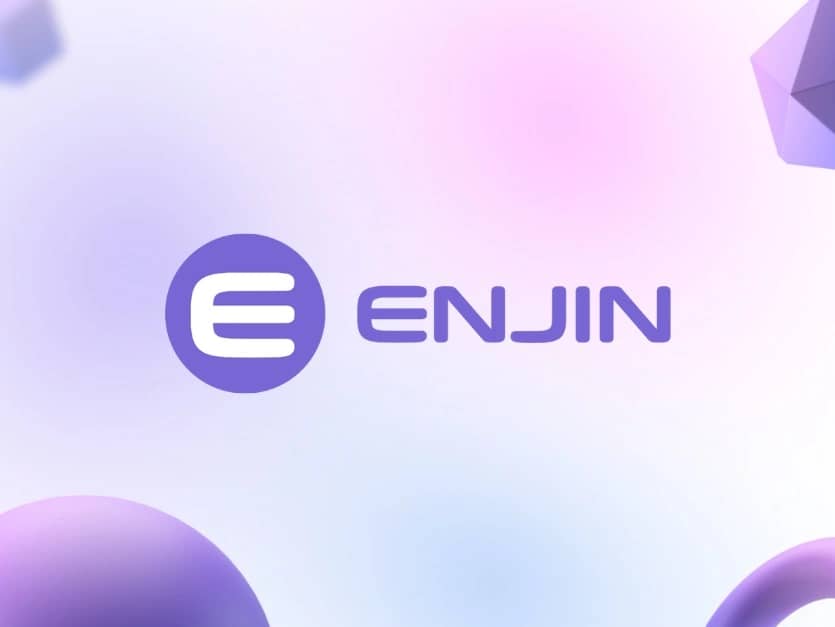Subscribe to wiki
Share wiki
Bookmark
Enjin
The Agent Tokenization Platform (ATP):Build autonomous agents with the Agent Development Kit (ADK)
Enjin
Enjin is a blockchain platform for digital assets and NFTs, offering tools and infrastructure for secure and efficient asset management. Its ecosystem includes services like the Enjin Platform and NFT.io to support developers and users in creating, trading, and managing digital assets. [1]
Overview
Enjin is a blockchain platform tailored for gaming and business, leveraging its Relaychain infrastructure. The Enjin ecosystem includes tools like the Enjin Platform, NFT.io, Enjin Wallet 2.0, Beam, and SDKs designed to enhance revenue and innovation for developers. It simplifies blockchain game creation with comprehensive tools and services, including Blockchain SDKs, APIs, and automation. The Enjin Ecosystem supports innovative crowdfunding models and facilitates user-driven asset creation, enhancing player loyalty and reducing gray market losses. It also extends beyond gaming, offering applications for tokenizing art, music, and collectibles and creating immersive VR and AR experiences. [2]
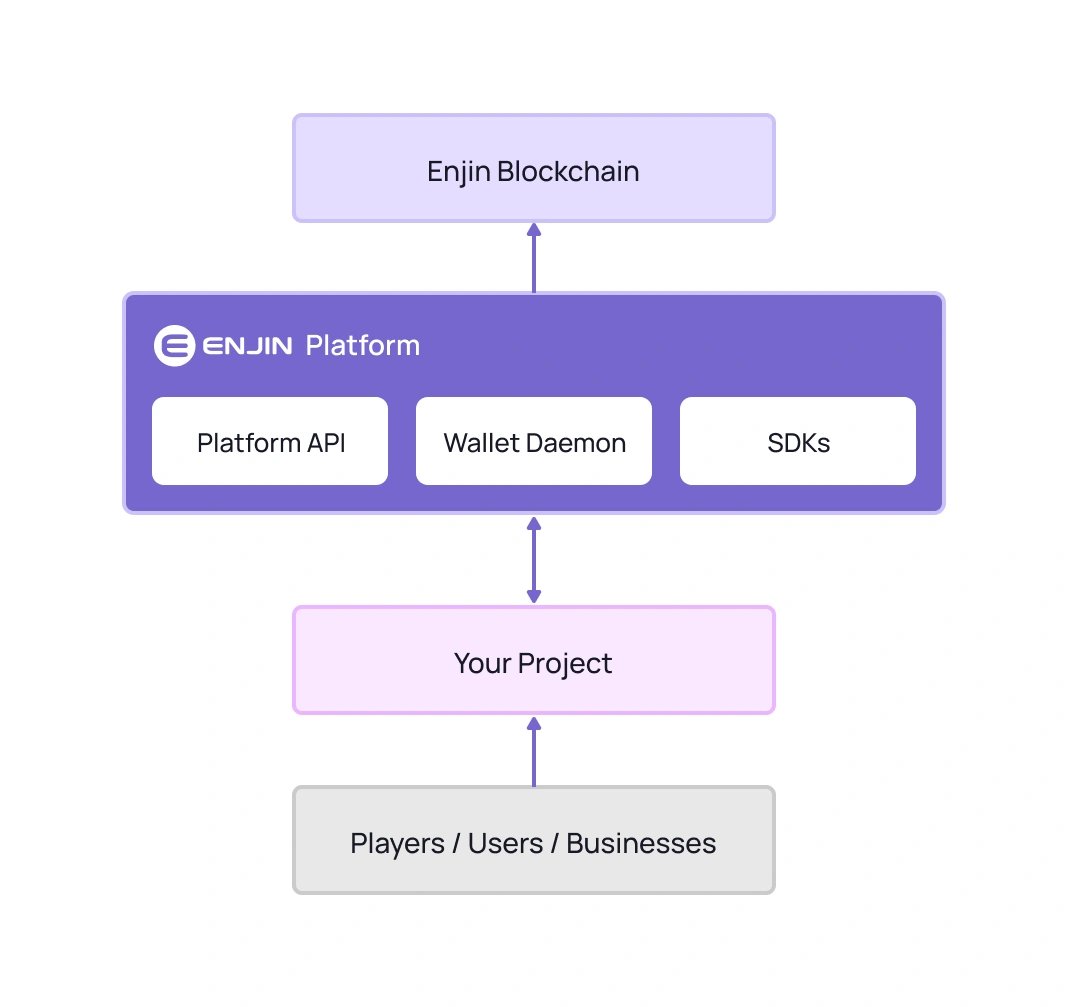
Enjin Blockchain
The Enjin Blockchain is a Layer 1 protocol with built-in NFT functionalities governed by a delegated Proof-of-Stake (PoS) consensus protocol. It is designed for scalability and efficiency, processing over 5,000 transactions per second (TPS). [3]
Relaychain
Enjin Relaychain is a decentralized network designed for digital assets and NFTs, built on Polkadot using the Substrate framework. It offers high scalability, allowing for increased transaction throughput and enhanced performance through a multi-chain approach that processes transactions in parallel. The network includes a primary Relay chain and customizable Matrix Chains. The Relay chain ensures security and block validation, while Matrix Chains focus on speed and cost efficiency, providing flexibility for different use cases. Enjin’s approach to scalability and costs avoids the complexities of parachain auctions, offering predictable and cost-effective solutions. Staking is simplified with a user-friendly interface on the Enjin Wallet, allowing easy allocation to nomination pools without compromising liquidity. The platform promotes inclusivity, enabling broad participation in network security and rewards. It integrates seamlessly with Enjin products, creating a cohesive ecosystem for users and developers. [4]
Matrixchain
The Enjin Matrixchain is a decentralized and trustless network that allows anyone to operate a Node and engage in its activities. It aims to offer a scalable and secure platform for NFTs by using the Substrate framework to provide a robust infrastructure for the NFT ecosystem. It supports minting fungible and non-fungible tokens with customizable pricing features like bonding curves. It also includes Fuel Tanks for subsidizing transaction fees and an On-Chain Marketplace that supports trading without needing token listings, ensuring royalties for sales across platforms. Users can extend functionalities with custom smart contracts. [3][5]
Blockchain Nodes
Enjin supports three node types: RPC, collator, and archive, each suited for different requirements and use cases. Once compiled, a node can be used as an RPC node, collator, or archive node, depending on the user’s needs. [6]
RPC Node
An RPC node connects to the Enjin network and functions as an interface to the Matrixchain, typically hosted on a remote server and accessed by client-side applications via RPC or WS endpoints. However, RPC nodes do not store the complete chain history, so they cannot provide historical data, which is a limitation when selecting this node type. [6]
Collator Node
A collator node maintains a Matrixchain by gathering user transactions and generating state transition proofs for Relaychain validators. Collators operate a full node for the Relaychain and their specific Matrixchain, allowing them to author new blocks and execute transactions similar to validators on PoS blockchains. They typically collate and process transactions to create a block and then broadcast it to other collators and Relaychain validators. [6]
Running a collator node allows users to earn rewards by participating in the Enjin network, but collators do not secure the network. Enjin employs a Proof of Authority (PoA) consensus mechanism where block producers are selected from a list of authorized validators. The number of collators does not necessarily enhance network security, as Relaychain validators will reject invalid Matrixchain blocks. Excessive collators can even slow down the network. Collators have the power to censor transactions, so a Matrixchain should include some neutral collators to mitigate censorship, though a single honest collator can theoretically address this issue. [6]
The management of collators on the Enjin Matrixchain is overseen by the collator staking pallet, which selects and rewards block producers each round. Rewards consist of transaction tips and fees collected from each block and transferred to the fee distribution account. At the end of each session, the pool pallet distributes these accumulated fees to registered pools, with the collator pool receiving 70% of the distribution. The collator staking pallet then allocates these rewards to collators from the funds in the collator pool account. [6]
Archive Node
An archive node maintains the full history of the network, making it useful for developers conducting application tests and running analytics and for blockchain explorers, providing complete chain state visibility. Collators also use archive nodes to verify the network's state. However, archive nodes require substantially more disk space than other node types. [6]
Enjin Platform
The Enjin Platform is an advanced open-source framework for building NFT platforms and integrations, facilitating seamless communication with the Enjin Blockchain. It acts as a bridge between blockchain technology and user-friendly applications, using a lightweight, modular layer with a flexible GraphQL API to manage blockchain interactions, eliminating the need for direct engagement with traditional smart contracts. The platform enables the creation, minting, and transfer of blockchain tokens and the administration of collections and wallets. With a customizable modular design, optional add-on packages offer additional tools for specific needs. The platform is available in two versions: an open-source, self-hosted version for full control over data and a hosted version, the Enjin Platform Cloud, for rapid integration. [7]
Features
Data Management Tool
The Data Management Tool, provided by Indexers, structures and organizes blockchain data by creating a centralized database from blockchain inputs. This allows developers to access specific data without sifting through the entire blockchain database. [7]
Quick Sync
The Enjin Platform provides a quick sync method, allowing developers to fetch and store the latest blockchain state in a pre-packaged index, saving time and effort compared to syncing the entire blockchain. The "Worker" service manages all blockchain blocks and parses all extrinsic events in each block. [7]
Auto-Healing
The Enjin Platform's auto-healing function continuously monitors the database's health. In case of corruption or saving mismatches, the platform automatically re-syncs with the current chain state to ensure data accuracy and currency. [7]
Relaychain ENJ Auto-Teleport
The Enjin Ecosystem consists of two chains: the Enjin Relaychain for Staking and Governance and the Enjin Matrixchain for NFTs and marketplace functions. Users purchasing ENJ on an exchange and depositing it into a Dapp's managed wallet on the Relaychain might be confused, as the Dapp creator expects the deposit on the Matrixchain. To address this, the Auto-Teleport feature was introduced. This feature automatically transfers any Relaychain ENJ received in a managed wallet to the corresponding Matrixchain, streamlining the process and eliminating the need for manual transfers. [7]
Modular Design
The Enjin Platform is designed with a lightweight, modular structure, allowing developers to tailor the integration to their needs. The Platform and Platform Core provide fundamental functionality, while various optional packages expand integration capabilities without altering the core codebase. Developers can further enhance their configuration by integrating Laravel Horizon, which translates all Platform data into a visually appealing dashboard. Contributions to the codebase are welcomed, enabling continuous improvement and expansion of the framework. [7]
User Interface and Cloud
The Enjin Platform features a user-friendly graphical interface with forms for creating, viewing, and managing collections and NFTs. It also allows UI extension with additional components like Beams and Fuel Tanks. The interface is available as a standalone application for self-hosted setups or as a standard feature in the hosted version. [7]
The Enjin Platform Cloud offers a simplified version for easier NFT project launches. Hosted on Enjin's secure servers, it enables quick setup and operation of NFT projects. Users can create an account, generate an API key, and start their project with minimal steps, while the Wallet Daemon ensures secure transaction management. [7]
Quick Wallet
Quick Wallet is a centrally managed virtual wallet that allows users to claim Enjin Beam without needing the Enjin Wallet initially. Users can use a secure code to claim the Beam for free via email and transfer it to the Enjin Wallet. Quick Wallet enables participation in the Enjin ecosystem for both Web3-native users unfamiliar with Enjin and Web2 users through an accessible email-claim option. It simplifies NFT claiming by reducing friction and offering a seamless user experience with enhanced security features that help users engage with NFTs without technical concerns. This feature promotes a more accessible entry into the Web3 space for newcomers. [13]
Enjin Wallet
The Enjin Wallet has been completely redesigned for improved performance, stability, and reliability. It now offers enhanced speed and user-friendliness, making it ideal for NFT enthusiasts, including game developers, art collectors, and gamers. The updated interface ensures accessibility and provides a secure and efficient solution for storing, trading, and transferring NFTs, with broad compatibility for various cryptocurrencies. Game developers can integrate seamlessly with the Enjin Platform using the Enjin Wallet, which supports the Enjin Blockchain, API, SDKs, and NFT.io. The wallet's user-friendly interface and broad cryptocurrency compatibility make it a versatile tool for securely managing NFTs. It supports multiple blockchains, including BTC, LTC, ETH, BEP-20, Polygon, Polkadot, KSM, Doge, and ERC-20, allowing users to handle diverse digital assets in one place. [8]
NFT.io Marketplace
NFT.io is an NFT marketplace integrated with the Enjin Blockchain, designed to provide a secure and user-friendly platform for trading digital assets. The marketplace supports a variety of NFTs, including digital art and crypto-collectibles, and offers a streamlined experience for listing, bidding, and creating collections. It features an ad-free environment, a responsive design for mobile and desktop devices, and supports instant transactions. Users can also set up auctions, create Enjin Beams, and make purchases using credit cards or fiat payments. The platform supports GIF, MP4, and GLB files and provides instant notifications for transactions. [9]
Enjin Beam
Enjin Beam facilitates the marketing and distribution of blockchain assets using QR code technology on the Enjin blockchain. Available on NFT.io for registered users and accessible via the Enjin Platform API for game developers, Enjin Beam supports customizable reward distribution for various purposes, including gaming assets and branded collectibles. The QR codes can be shared through multiple platforms such as social media, websites, and ads, allowing for broad audience reach and targeted promotion. [10]
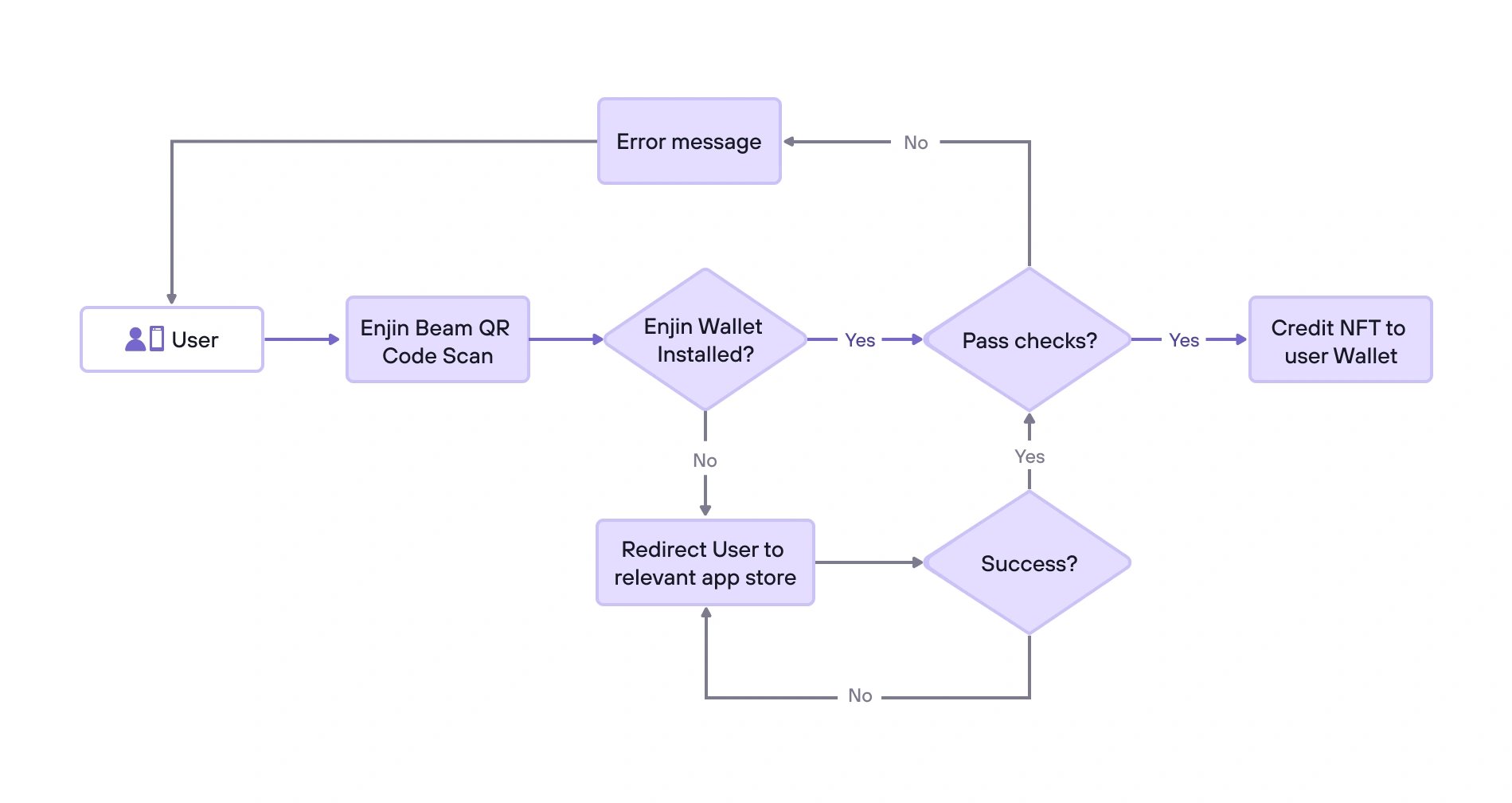
Mint on Demand
The Mint on Demand feature in Enjin Beam eliminates the need for pre-minting tokens, allowing tokens to be minted directly to users' wallets at the time of claim. This reduces the waiting time for tokens to arrive compared to the traditional pre-minting approach. [10]
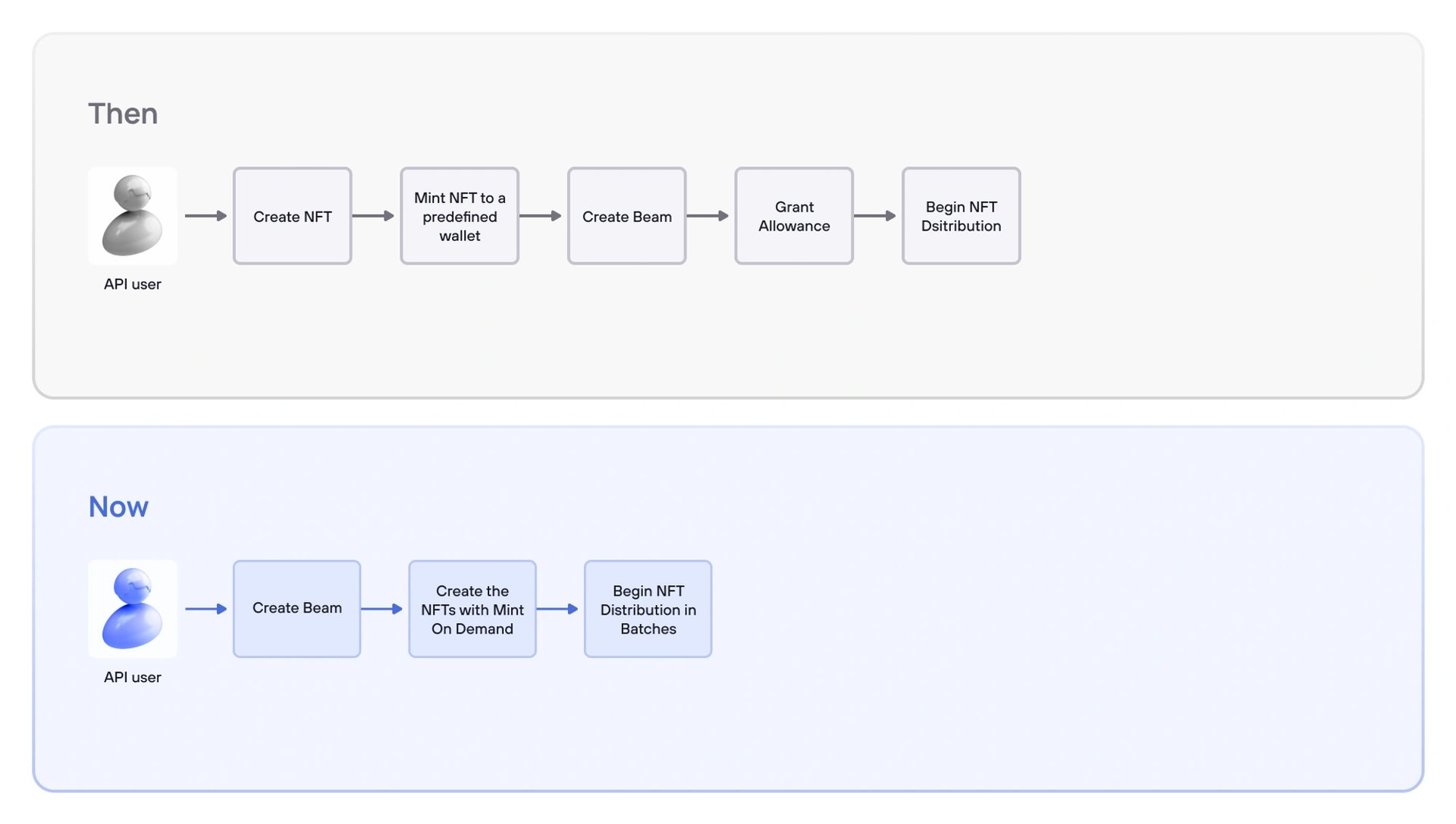
Batch Mint & Transfer
Enjin Beam includes batch mint and transfer features, enabling multiple tokens to be minted or transferred in a single transaction. This approach reduces system load during high activity and allows users to claim tokens more quickly and at a lower cost. [10]
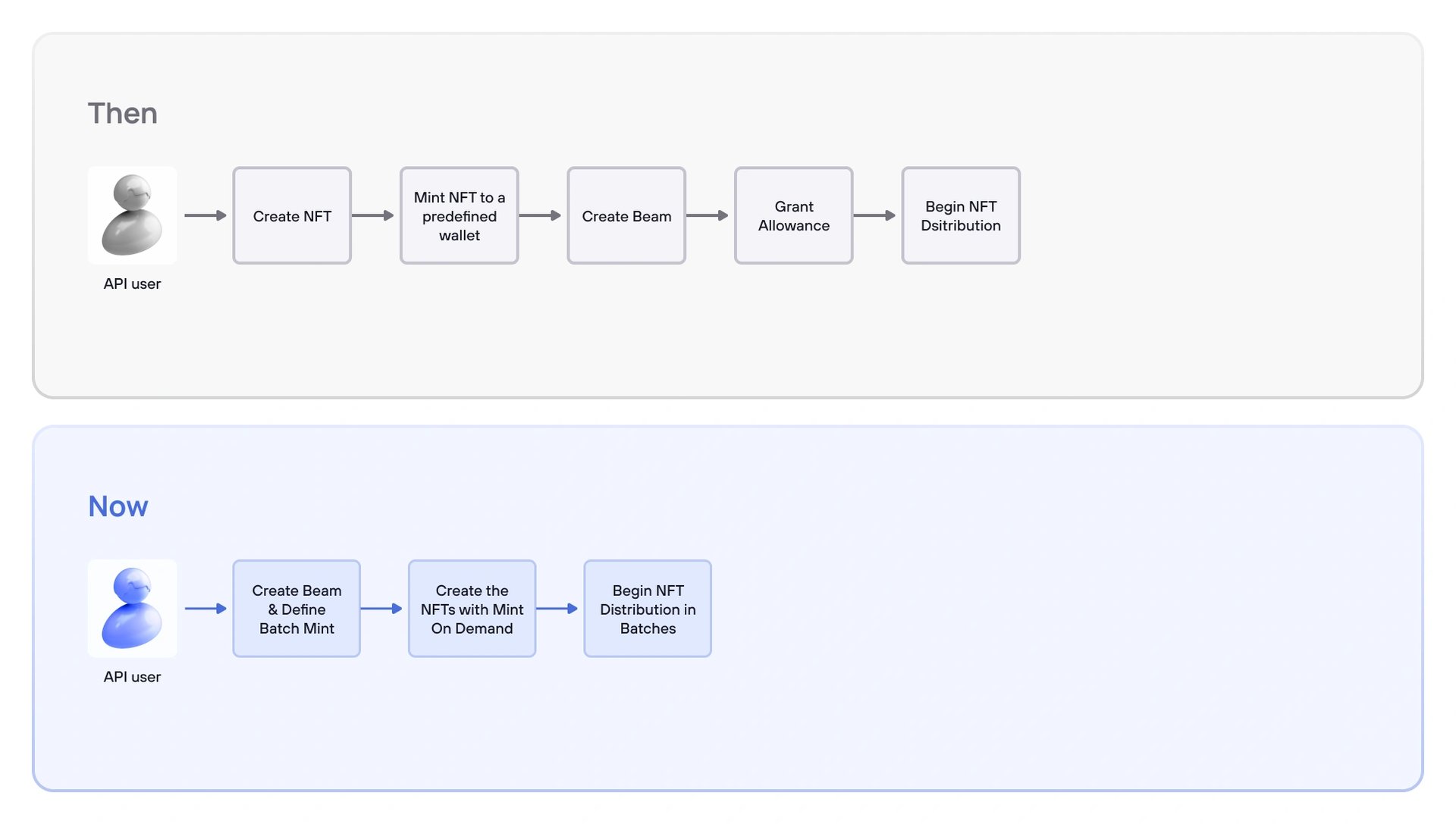
Integer Range Type
The Integer Range type is a new feature that simplifies Beam creation by allowing the specification of a sequential range of token IDs using a shorthand format. Instead of listing each token ID individually, users can provide a range in the format "[startId..endId]". Single IDs and ranges can also be combined. [10]
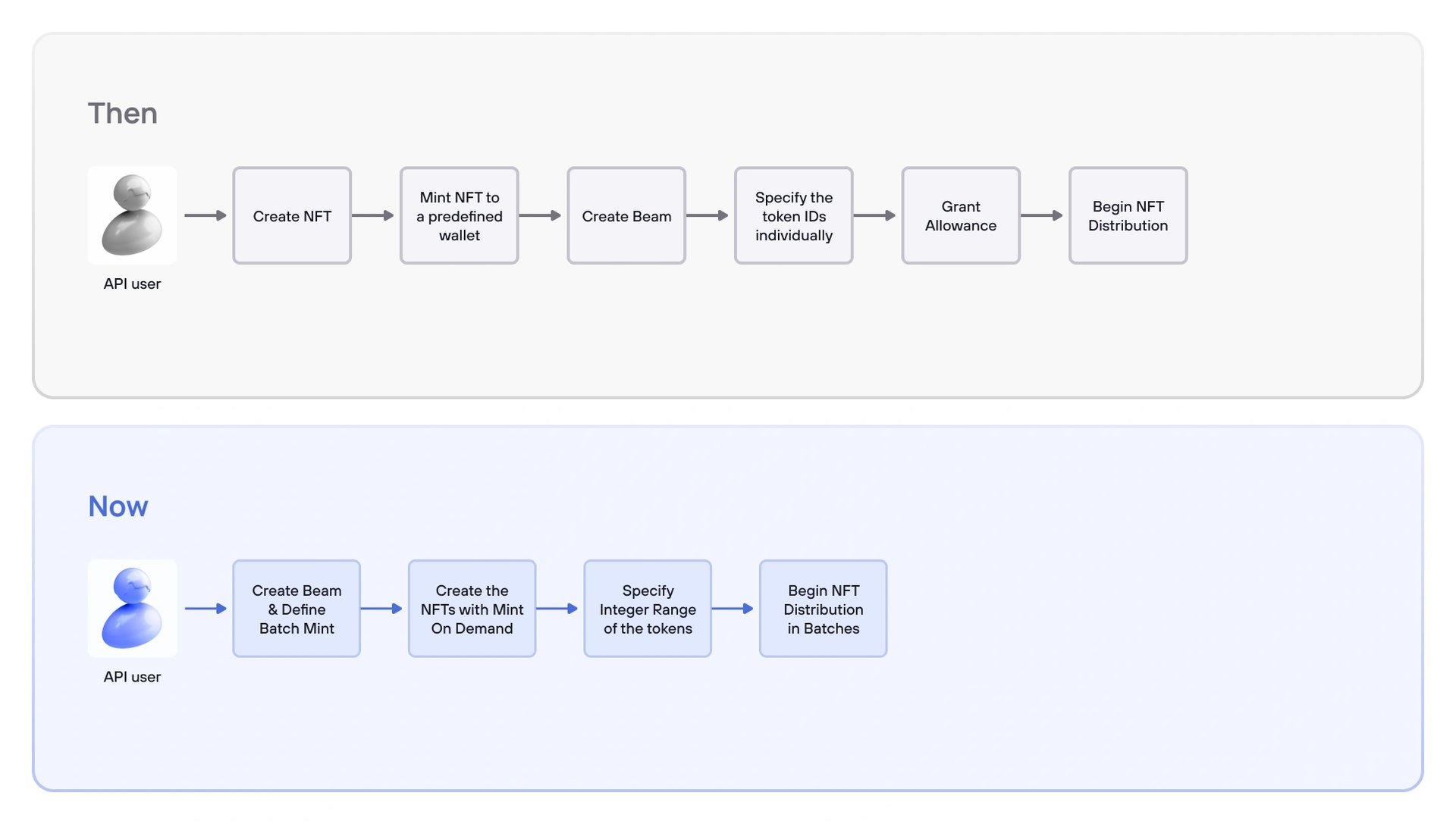
Set Attributes
Developers can now set token attributes during their initial minting on-chain, including unique and computed metadata. This feature works well with the mint-on-demand capability, enabling game developers to create tokens and set their metadata as the beam is generated, responding to increasing demand for new tokens. [10]
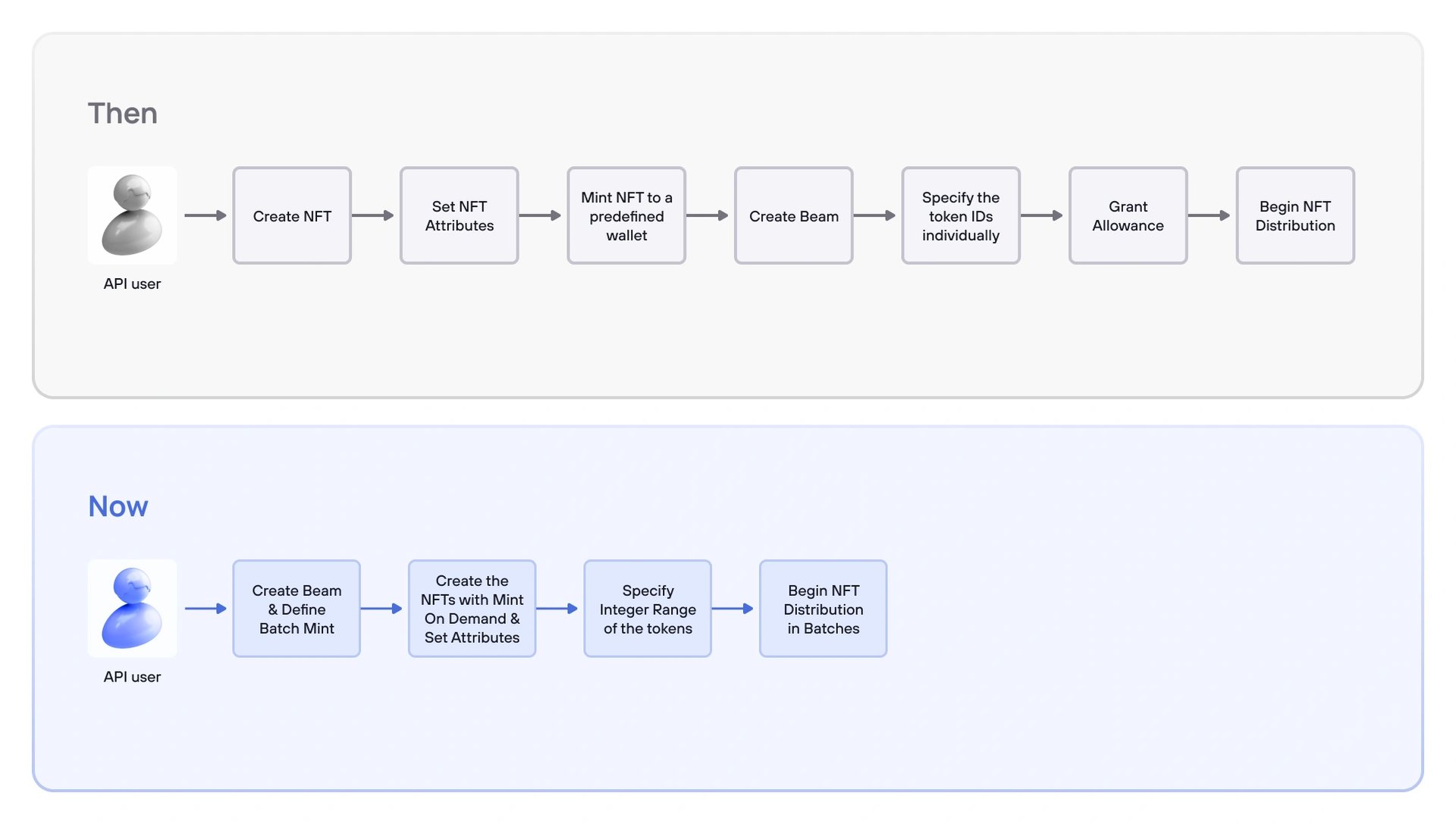
ENJ Coin
Enjin Coin (ENJ) is the native currency of the Enjin Blockchain, essential for transactions, paying fees, and participating in governance through staking. The blockchain employs a decentralized governance model controlled by ENJ holders who can propose and vote on changes, ensuring an inclusive decision-making process. From July 1st, 2023, the blockchain launched with full governance support and no super-user access, maintaining transparency and fairness. ENJ also acts as a medium of exchange within the ecosystem and rewards community participation. Integrated with Enjin products like the wallet and NFT marketplace, the blockchain emphasizes inclusivity, interoperability, scalability, and regulatory compliance, with security provided by a nominated proof-of-stake mechanism. Staking ENJ is facilitated through a user-friendly interface in the Enjin Wallet, allowing easy allocation to nomination pools. [11]
As of May 31, 2024, 88% of mainnet ENJ is unlocked, following a 50% unlock of Early Governance Rewards and a full unlock of the Ecosystem Pool. By October 15, 2024, 96% of mainnet ENJ is expected to be unlocked, coinciding with the full release of Early Governance Rewards. The Enjin Blockchain operates with a nearly fully unlocked token supply, with the remaining 7% tied to ongoing governance reward distributions through October 2024 and small community pools. As of June 7, 2024, nearly 20% of the total supply is staked for governance, according to Subscan data. [14]
Tokenomics
ENJ has a total supply of 1.8B and has the following distribution: [12]
- Pre-Sale: 40%
- Crowdsale: 40%
- Community: 10%
- Team and Advisors: 10%
Partnerships
- Samsung Knox
- New York Culture Club
- Cyborg’s Quest
- Boonance.US
- Binance Collectibles
- Parallel Worlds
- Ethereum Foundation
- HapiHeros
- Atari Pluriform
- R.I.P. 2020
- Changelly
- WeHop NFT
- ENJ Beam Club
- Subscan
- CyberCrew
- Stones Luxury
- Beauty in the Streets
See something wrong?
The Agent Tokenization Platform (ATP):Build autonomous agents with the Agent Development Kit (ADK)
